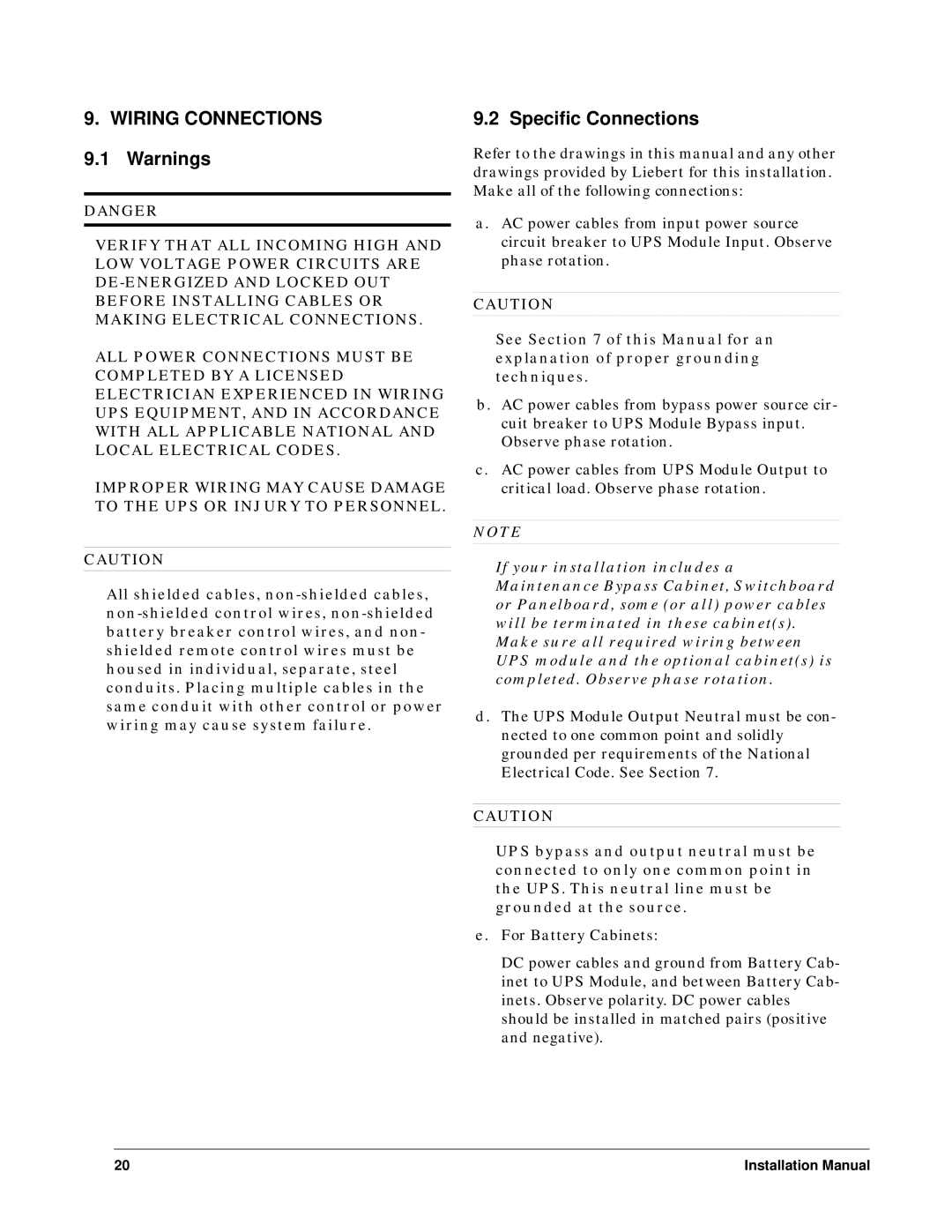
9. WIRING CONNECTIONS
9.1 Warnings
DANGER
VERIFY THAT ALL INCOMING HIGH AND LOW VOLTAGE POWER CIRCUITS ARE
ALL POWER CONNECTIONS MUST BE COMPLETED BY A LICENSED ELECTRICIAN EXPERIENCED IN WIRING UPS EQUIPMENT, AND IN ACCORDANCE WITH ALL APPLICABLE NATIONAL AND LOCAL ELECTRICAL CODES.
IMPROPER WIRING MAY CAUSE DAMAGE TO THE UPS OR INJURY TO PERSONNEL.
CAUTION
All shielded cables,
9.2 Specific Connections
Refer to the drawings in this manual and any other drawings provided by Liebert for this installation. Make all of the following connections:
a.AC power cables from input power source circuit breaker to UPS Module Input. Observe phase rotation.
CAUTION
See Section 7 of this Manual for an explanation of proper grounding techniques.
b.AC power cables from bypass power source cir- cuit breaker to UPS Module Bypass input. Observe phase rotation.
c.AC power cables from UPS Module Output to critical load. Observe phase rotation.
NOTE
If your installation includes a Maintenance Bypass Cabinet, Switchboard or Panelboard, some (or all) power cables will be terminated in these cabinet(s). Make sure all required wiring between UPS module and the optional cabinet(s) is completed. Observe phase rotation.
d.The UPS Module Output Neutral must be con- nected to one common point and solidly grounded per requirements of the National Electrical Code. See Section 7.
CAUTION
UPS bypass and output neutral must be connected to only one common point in the UPS. This neutral line must be grounded at the source.
e.For Battery Cabinets:
DC power cables and ground from Battery Cab- inet to UPS Module, and between Battery Cab- inets. Observe polarity. DC power cables should be installed in matched pairs (positive and negative).
20 | Installation Manual |
